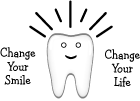3 Ways to Identify Bite Problems
Bite problems can be a starting point for major damage to a healthy mouth. It can begin with discomfort or immediate pain and can take off from there. If your teeth don’t fit together it is called malocclusion.
A malocclusion can be caused by thumb sucking, long-term bottle or pacifier use, losing baby teeth early or late, an accident, or an inherited trait because of the size of the face, jaws, or teeth. As your general dentist, we can diagnose and keep an eye on a malocclusion. Most of the time this starts in early childhood. It can be easier and less expensive to treat a malocclusion early on.
These types of issues can include an overbite (where the upper teeth go too far down over the lower front teeth), underbite (when the lower front teeth are farther forward than the upper front teeth, cross bite (when all the upper teeth fit into the wrong side of the lower teeth), open bite (when the upper and lower front teeth don’t overlap), spacing or crowding, upper protrusion (where the upper front teeth are pushed outward), misplaced midline (when the center of the upper teeth doesn’t match up with the center line of the lower teeth), rotation (when a tooth turns or tips out of normal position), or transposition (when the teeth grow in another’s place).
We can identify bite problems in three ways.
- First, let’s try the “clench test.” Close your teeth together and squeeze hard. If there is discomfort, you may have a malocclusion.
- If you have pain or discomfort on a daily basis, it may call for a closer look. Sensitivity to heat or cold could be a warning sign as well as feeling regular discomfort in your teeth or jaw joint.
- We will look at the wear patterns on your teeth. If you are wearing the enamel down on the biting surface or edges of the tooth, you could have a malocclusion.
Let’s take the time to look into any bite issues before a malocclusion creates even bigger problems for the health of your mouth. We understand that diagnosing the problem sooner rather than later can determine a course of action that can keep your teeth happy and healthy! Set up your exam and screenings soon!

